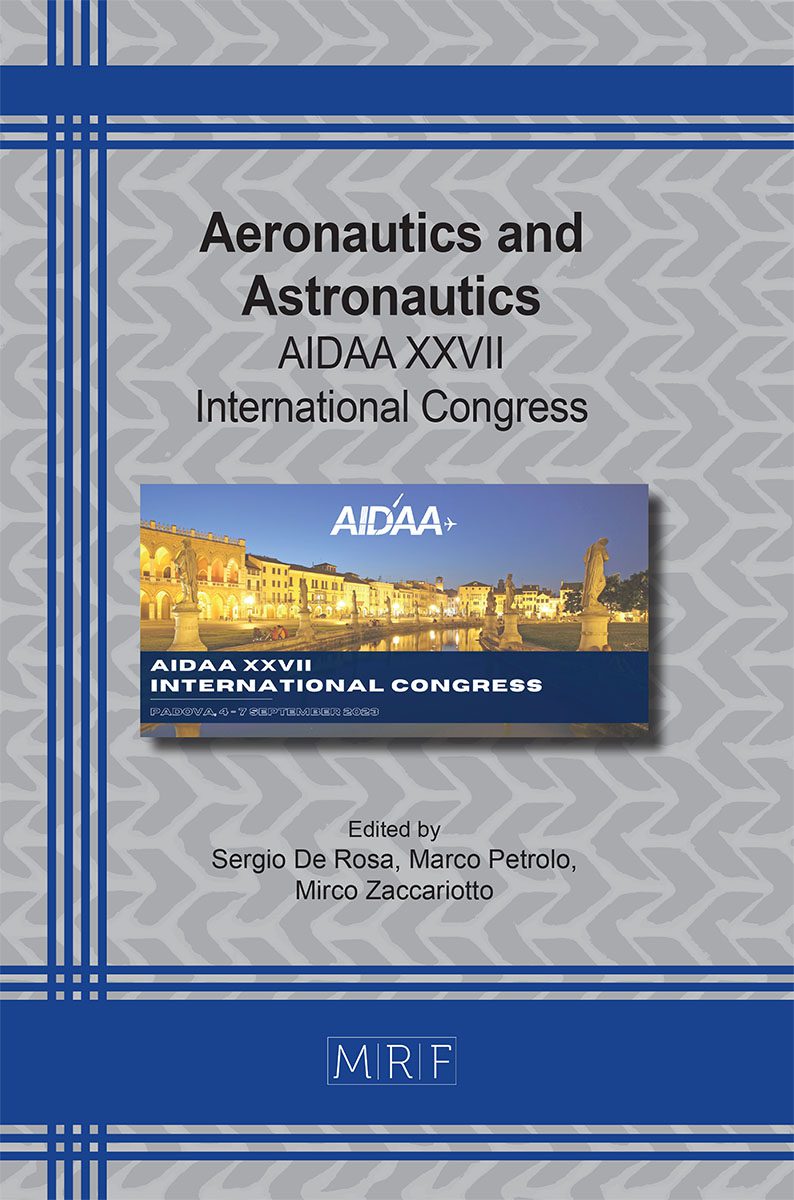Hybrid graph-clothoid based path planning for a fixed wing aircraft
Luciano Blasi, Egidio D’Amato, Immacolata Notaro, Gennaro Raspaolo
download PDFAbstract. Planning of safe and efficient trajectories is a critical task in the operation of unmanned aerial vehicles (UAVs), especially in urban or complex environments. With the increasing use of UAVs for various applications, such as surveillance, delivery, and inspection, it is becoming more important to automatically generate collision-free paths that also consider aircraft dynamics. This paper proposes an algorithmic approach based on the Rapidly exploring random tree (RRT) algorithm combined with a clothoid-based smoothing procedure to account for aircraft performance.
Keywords
Path Planning, Clothoids, RRT, UAVs
Published online 11/1/2023, 4 pages
Copyright © 2023 by the author(s)
Published under license by Materials Research Forum LLC., Millersville PA, USA
Citation: Luciano Blasi, Egidio D’Amato, Immacolata Notaro, Gennaro Raspaolo, Hybrid graph-clothoid based path planning for a fixed wing aircraft, Materials Research Proceedings, Vol. 37, pp 104-107, 2023
DOI: https://doi.org/10.21741/9781644902813-23
The article was published as article 23 of the book Aeronautics and Astronautics
![]() Content from this work may be used under the terms of the Creative Commons Attribution 3.0 license. Any further distribution of this work must maintain attribution to the author(s) and the title of the work, journal citation and DOI.
Content from this work may be used under the terms of the Creative Commons Attribution 3.0 license. Any further distribution of this work must maintain attribution to the author(s) and the title of the work, journal citation and DOI.
References
[1] L. Blasi, E. D’Amato, M. Mattei e I. Notaro, «UAV Path Planning in 3D Constrained Environments Based on Layered Essential Visibility Graphs,» IEEE Transactions on Aerospace and Electronic Systems, pp. 1-30, 2022. https://doi.org/10.1109/TAES.2022.3213230
[2] M. Al Nuaimi, Analysis and comparison of clothoid and Dubins algorithms for UAV trajectory generation, 2014.
[3] T. Tuttle e J. P. Wilhelm, «Minimal length multi-segment clothoid return paths for vehicles with turn rate constraints,» Frontiers in Aerospace Engineering, vol. 1, 2022. https://doi.org/10.3389/fpace.2022.982808
[4] E. Bertolazzi e M. Frego, «Interpolating clothoid splines with curvature continuity,» Mathematical Methods in the Applied Sciences, vol. 41, p. 1723–1737, 2018. https://doi.org/10.1002/mma.4700
[5] D. S. Meek e D. J. Walton, «Clothoid spline transition spirals,» Mathematics of computation, vol. 59, p. 117–133, 1992. https://doi.org/10.1090/S0025-5718-1992-1134736-8
[6] T. Fraichard e A. Scheuer, «From Reeds and Shepp’s to continuous-curvature paths,» IEEE Transactions on Robotics, vol. 20, p. 1025–1035, 2004. https://doi.org/10.1109/TRO.2004.833789
[7] D. K. Wilde, «Computing clothoid segments for trajectory generation,» in 2009 IEEE/RSJ International Conference on Intelligent Robots and Systems, 2009. https://doi.org/10.1109/IROS.2009.5354700
[8] S. Gim, L. Adouane, S. Lee e J.-P. Derutin, «Clothoids composition method for smooth path generation of car-like vehicle navigation,» Journal of Intelligent & Robotic Systems, vol. 88, p. 129–146, 2017. https://doi.org/10.1007/s10846-017-0531-8
[9] T. McLain, R. W. Beard e M. Owen, «Implementing dubins airplane paths on fixed-wing uavs,» 2014.
[10] S. M. LaValle, «Rapidly-exploring random trees : a new tool for path planning,» The annual research report, 1998.












